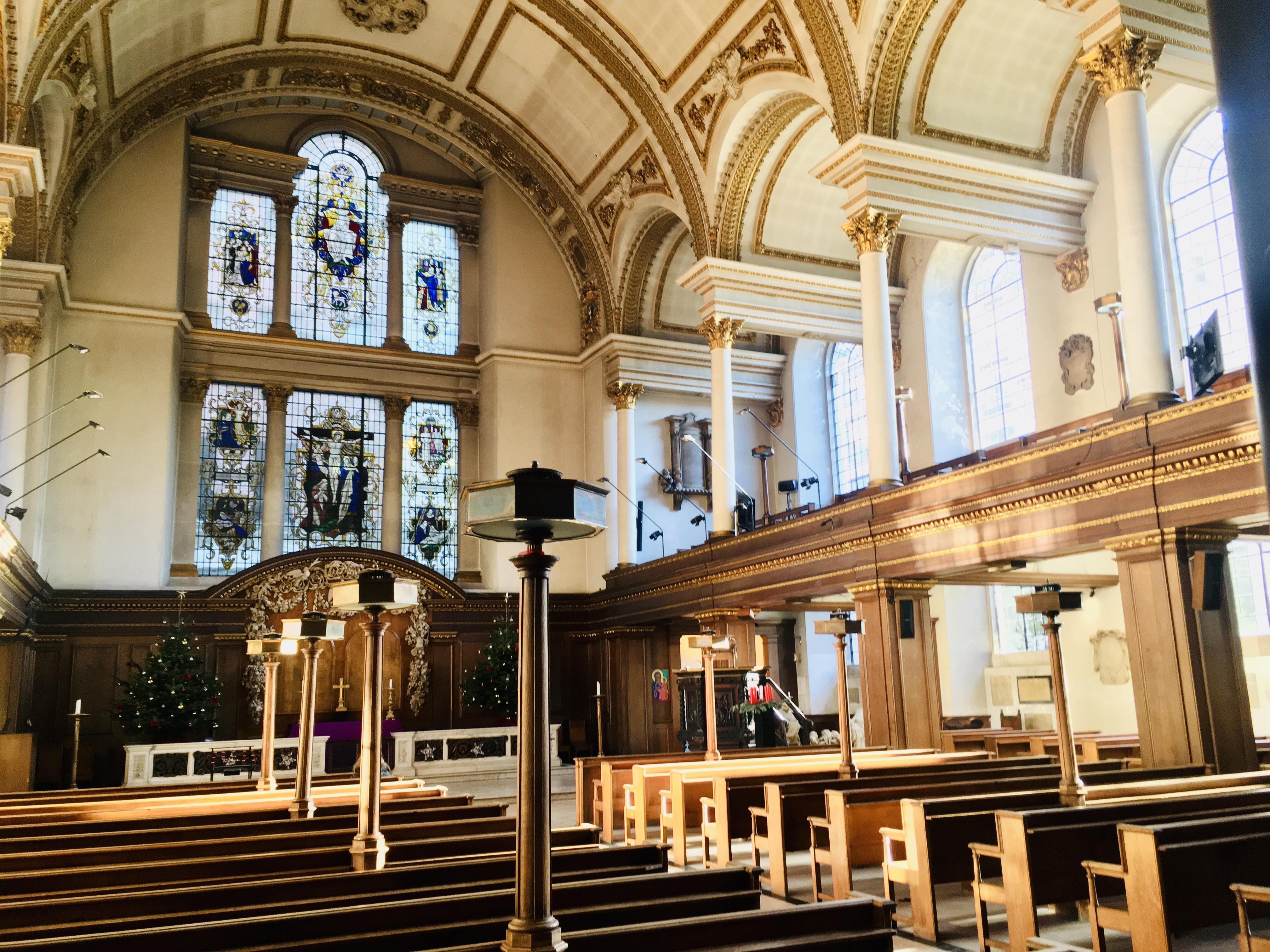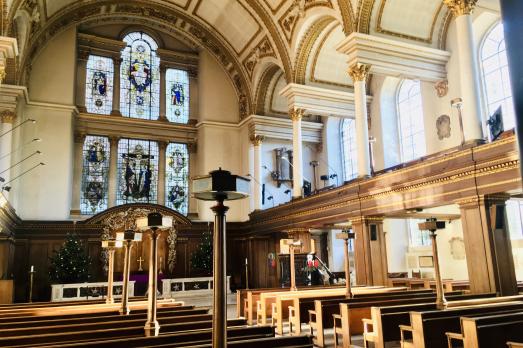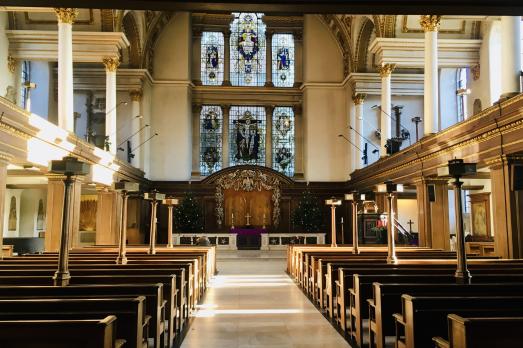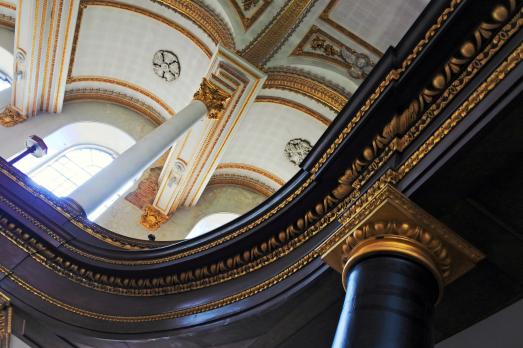Today, in 21st century London, this light and beautiful church stands as an oasis of calm amid the hectic activity of Piccadilly Circus. Our lively, diverse Sunday congregation commits to being inclusive and adventurous, sensitive to the poetry and politics of the gospel; finding creative ways to proclaim the gospel afresh in each generation.
St James's church, garden, courtyard and rectory stand at the heart of London’s West End.
The church was consecrated on 13th July 1684 by Henry Compton, Bishop of London. The architect was Sir Christopher Wren and the reredos above the altar was carved by Grinling Gibbons (it is considered to be amongst his finest work).
The first Rector was Dr Tenison, previously Vicar of St Martin in the Fields, out of which parish the new parish of St James’s was formed. Dr Tenison later became Archbishop of Canterbury. The current Rector is The Revd Lucy Winkett who came to St James’s in 2010 from St Paul’s cathedral where she was Canon Precentor and the first woman priest to be appointed there.
The 17th century portrait painter, Mary Beale, was buried at St James's and the 18th century artist Maria Angelica Kauffman was married here in 1764. There are also memorial tablets to the two Dutch marine painters, William Van de Velde the Elder (1610-1693) and the Younger (1633-1707). James Gillray, the caricaturist (d1815) is also commemorated in a stone tablet.
Literary references begin in the 17th century with Vanbrugh’s high society comedy, The Relapse, and there entries about St James's in the diaries of John Evelyn (1703) and Samuel Pepys (1762), together with an account of the congregation at St James’s in 1772 by Daniel Defoe. The First World War poet Robert Graves was married here, and arguably the most important literary and artistic figure associated with St James’s is the visionary poet William Blake, baptised here at the Grinling Gibbons font in 1757.
The church was severely damaged by enemy action in October 1940 and the restoration, under the direction of Professor AE Richardson RA, was completed in 1954 when the church was rededicated by the Bishop of London on 19th June. St James's is part of the Diocese of London and the worldwide Anglican Communion, and we welcome people of all faiths and none. Whether you come to attend a service, enjoy our garden, visit our courtyard markets, or to see the historic building, you are welcome.




